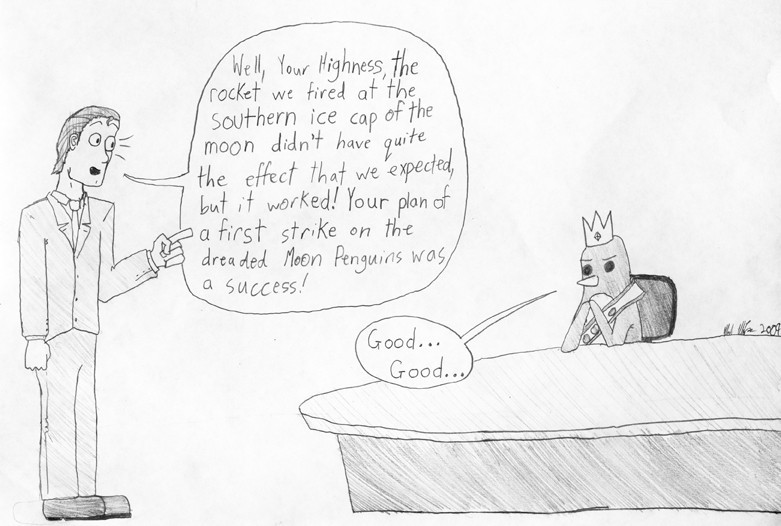Shooting for the moon
NASA lunar bombing ends in disappointment
I still remember those early days of my youth, where on those crisp clear nights of the late summer I would lie on a blanket in the backyard and stare into the night sky. For hours I would lie there, looking up at all the stars, feeling small and insignificant and I would think to myself, “Gosh, I wish I was a billionaire. Then, I could build a rocket ship and launch it into outer space ... and I would blow a big-honkin’-ass hole in the southern ice cap of the moon.”
Of course, it was a silly little boyhood dream. Nobody in their right mind would spend a billion bucks on a mission to blow up the moon.
But as it turns out, the cost actually turns out to be far less – the good people down at NASA only had to spend $80 million to make my childhood dream come true the other week. That was the day an empty rocket hull (dubbed Centaur) collided at over 9,000 kilometres per hour with the South Pole of the moon. The impact had the estimated force of one-and-a half tonnes of TNT and left a crater half the size of the Pan Am pool.
The scientific rationale for the mission was that by bombing the moon, the space agency might possibly discover evidence of water that, in theory, may lower the costs of establishing a permanent research facility there sometime down the road. Perhaps.
However, something (and that thing is called thought) tells me that this mission had more to do with public relations than science.
NASA spends $300 million per month on its lunar programs, and has done so since 2003. Back then, the Columbia space shuttle had just blown up, George Bush was president of the United States and your parents’ stocks in General Motors were still worth something.
But this is 2009. Taxpayers want a little more bang for their 300 million bucks and it’s getting harder every day for NASA officials to protect their collective wallet. So they came up with a plan to give the good people the show they’ve been waiting for.
Well, not exactly. As it happened, the moon bombing turned out to be more of a moon plopping, failing to send the anticipated massive six-mile-high plume of twisted steel and moon chunks spewing skyward. Centaur, for all intents and purposes, was a dud.
Fear not though, dear nerdlingers, for all is not lost. While evidence of water couldn’t be confirmed by observing the impact itself, NASA is now analyzing data relayed by the chase craft to determine whether or not we’ve struck blue gold. The chase craft, after relaying the data, also collided with the surface of the moon.
Regardless of whether or not the mission finds evidence of water, perhaps a more important discovery has been made. NASA has found a new place to dump Earth’s constantly-growing amount of space junk left over from past missions. We could even turn the moon into our own personal planetary landfill!
Now that’s the kind of idea that saves a space agency’s budget.
Rob Holt is a first-year University of Winnipeg student.
Published in Volume 64, Number 8 of The Uniter (October 22, 2009)







